Research on Integrated Analysis Method for Equipment and Tactics Based on Intervention Strategy Discussion
CHEN Chao(陈超),ZHANG Ying-xin(张迎新),MAO Chi-long(毛赤龙)
(1.College of Information System and Management,National University of Defense Technology,Changsha 410073,Hunan,China;2.Department of Naval Headquarters,Beijing 100038,China)
Introduction
In a narrow sense of military,there are two main factors which can affect the warfare result[1].Firstly,operation application,that is,commanders can apply their soldiers,weapons and equipment based on the war situation to win the war.In this paper,we call it as tactics.Secondly,the level of material preparation,especially the weapon and logistic,all these factors are called as equipment in this paper.
The information war design needs to be carried out before its occurrence[1],including the equipment and tactics designs.Because of the inherent characters of the equipment and tactics,they have to be designed in an integrated environment to achieve their matching development.
From academic articles published before,there are few researches on the methods of integrated analysis for equipment and tactics[1].They are scattered in other relevant studies on military issues,including armed forces development and planning[2-4],synthetic integration of complex war system[5-10]and concept design of some weapon systems[11-12].These methods reflect the idea and importance of integrated analysis for equipment and tactic;however,they lack deep research on integrated analysis,especially its intra mechanism and the operational framework.They do not analyze the intra logic mechanism from the characters of complex war system and put forward the effective integrated analysis method based on the intra logic mechanism.
This paper studies two problems mentioned above theoretically.The key of integrated analysis for equipment and tactics is to understand its intra mechanism and then put forward the reasonable method.
1 Evolvement Mechanism of Integrated AnalysisforEquipment and Tactics
1.1 Differential Game Model of War
In information war age,the outcome of a war may be determined at the initial days because the war’s rhythm is quickened very much.Once the war begins,it is difficult to develop new weapons according to the opposite weapon equipment.Thus,the equipment and tactic strategies can be described on the time axis,as shown in Fig.1.In this paper,they called as the intervention strategies.

Fig.1 Intervention strategies distributed on time axis
Suppose that there are only Blue and Red in the war.The red’s equipment strategy is u,its tactic strategy φ;the blue’s equipment strategy is v,its tactic strategy ψ.If T0=0,the red’s payoff function in the antagonism process from T0to T1can be expressed as

The blue’s payoff function can be denoted as-J.In(1),z is a variable describing the battle environment,and it reflects the states of both battle systems.Commonly,z can be a time function satisfying the state equation and constraint.

z1=z(T1)represents the battle environment at the time T1,and that u,v,φ,ψ are constrained.It can be assumed that they range in U,V,Φ,Ψ,respectively.
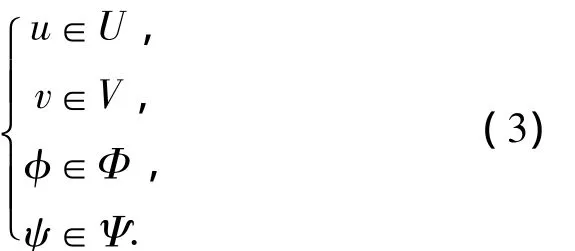
Therefore,the optimal strategies for red and blue can be denoted as u*,v*,φ*,ψ*under the constraint Eq.(3).That is

where z(t)meets the constraint of Eq.(2).Eq.(2 -4)form a differential game model,which can illustrate the strategy antagonism between red and blue from T0to T1.
1.2 Evolvement Mechanism of Equipment and Tactics
The differential game model formed by Eq.(2 -4)reveals three evolvement mechanisms,i.e.impetus mechanism of core interest antagonism,spiral evolvement mechanism and draft mechanism of battle background in future.
1.2.1 Impetus Mechanism of Core Interest Antagonism
The core interest zero-sum is one of the key characteristics of complex war system different from other complex system.The core interest antagonism between both red and blue is the most direct power that impels the war system development.Both sides in the war try their best to innovate their interfering strategies to cope with adversary strategies.The strategy antagonism model Eq.(4)sufficiently shows that the red creates new optimal intervention strategy(u,φwhich can restrict the opposite’s strategy(v,ψ)to win the war.The model Eq.(4)can be decompounded into two iterative optimal control problems.
The red’s optimal control problem can be expressed as
where F represents a differential equation of the system evolving with time t,Jv,ψ(u,φ)denotes the red’s gain in war end,which is a function Θ(z(T2))of the end state variable z when both sides adopt the strategy u,v,φ and ψ.Eq.(5)can be called as the red’s strategy analysis model.
Similarly,the blue’s optimal control problem can be written as
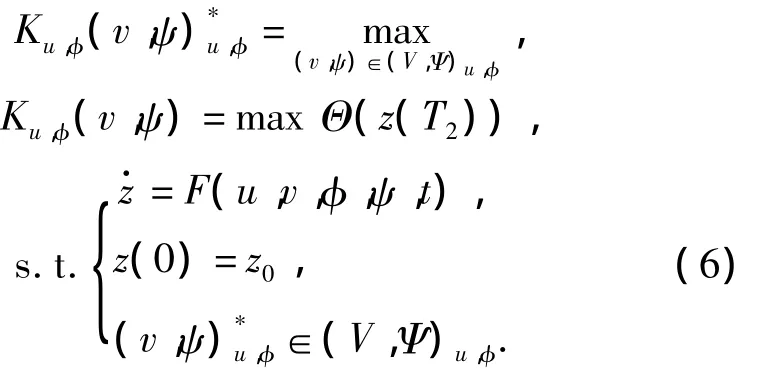
1.2.2 Spiral Evolvement Mechanism of Equipment and Tactics
The decomposition of differential game model in section 2.1 has illustrated the spiral evolvement mechanism of equipment and tactics.It can be summarized as an iterative process of two sentences,i.e.,“developing equipment based on tactics”and“establishing tactics based on equipment”.They can be described as two optimization problems.Taken red as an example,“developing equipment based on tactics”can be expressed as an equipment optimization problem,whose goal function is operation effect and whose constraint is tactics.Without considering blue strategies,its optimization model can be represented as where φ is the red’s tactics,u denotes a specific equipment development project constrained by red tactics,technology and time,Uφdenotes the scope of u when φ is given.The Eq.(7)can obtain an optimal project u*φof equipment development and the highest operation effect Jφ(u*φ)the red tactic φ is given.It can be called as equipment development model for short.

“Establishing tactics based on equipment”can be expressed as an optimization problem whose objective function is operation effect and whose constrain is red equipment.Without considering blue strategies,its model can be represented as

The tactics and equipment can be considered as constraints respectively in above two optimization problems.The equipment or tactics should be evolved when the tactics or equipment is change.Unceasing iterations make the equipment and tactics evolve unceasingly.As a result,a spiral development track is formed.
1.2.3 Draft Mechanism of Battle Environment in Future
The equipment and tactics must adapt to the battle environment in the future.In the differential game model,z represents the battle environment in the future,which can affect the payoff function J.Therefore,the intervention strategies(u,φ)should conform to battle environment z.
This sector discusses and exposes three mechanisms and mathematics theory in them through analyzing the differential game model.The core interest antagonism is direct power to develop the equipment and tactics;the battle environment in the future is the key traction;under these two impetuses,the spiral evolvement track is formed,as shown in Fig.2.
Some characteristics of WCS can be determined by un-repeatability.There is no real future in the evolvement of WCS,researchers can only explore and design evolvement track of WCS in the future[1].
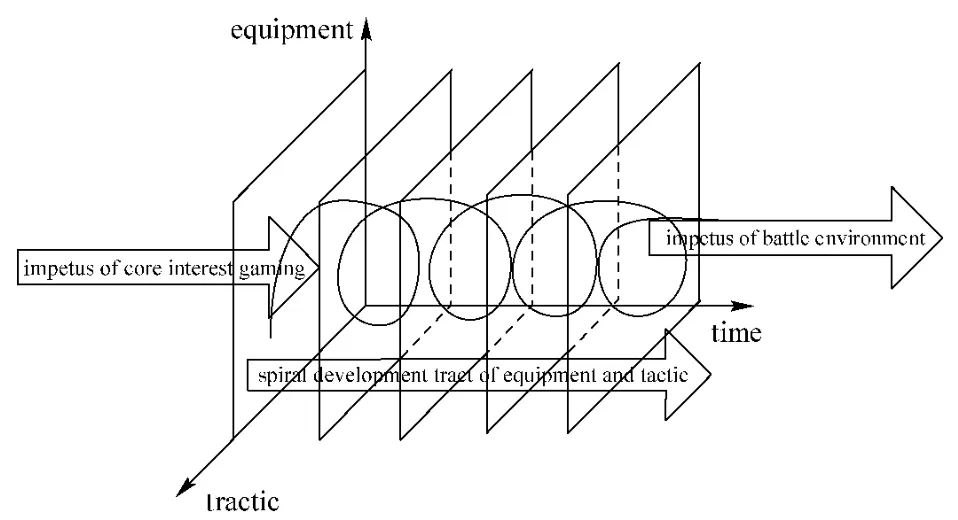
Fig.2 Evolvement mechanisms of equipment and tactics
2 Framework of Integrated Analysis for Equipment and Tactics
The complexity of the warfare system determines some inherent characteristics of the intervention strategy design,such as the creativity,purposefulness,robustness and adaptability.The“zero-sum game”for both antagonistic sides makes their intervention strategies have strong confrontation.It requires the both sides to innovatively design their own intervention strategies according to the shortage of the opposite side.They must do their best to make the capabilities of their own equipments or the perfections of their tactics exceed those of the opposite side.The distributed cognition of the warfare system makes the integrated analysis for equipment and tactics be finished impossibly in a single loop.It is an unceasing iteration process to make the cognition deepen gradually.The integration of the wisdom of many experts from different fields and design of the intervention strategies from multi aspects consequently to ensure their robustness and adaptability are important works in the integrated analysis for the equipment and tactic.The integrated framework is shown in Fig.3[1].

Fig.3 Framework of integrated analysis for equipment and tactics
2.1 Discussion of Constraint
The discussion of constraint is carried out under a given setting for the war design engineering.The setting normalizes the research objects and determines the specific area involved by the war design problem.The main purpose of the discussion is to determine the possible future scenarios under the given setting and choose a future scenario as the prerequisite for the discussion of the intervention strategies according to the circumstances.The future scenarios may be multiple,and this is also the reasons why the intervention strategy design has to be iterated.
The main content in discussion of constraint includes:
1)the discussion of the key factors affecting the future scenarios;
2)the determination of the future scenarios according to different factors;
3)the choice of a specific future scenario as a starting point for the discussion of equipment and tactic;
4)the discussion of the boundary or premise for both sides based on the specific future scenario;
5)the normal description of the future scenarios,that is,the clear and unambiguous description for the future scenarios.
2.2 Discussion of Intervention Strategies
The system engineers collaborate with the equipment and military engineers to discuss the integration mode of equipment and tactics and determine the integration mode(U,Φ)of equipment and tactics of red and(V,Ψ)of blue,which are adaptable,feasible,robust and compatible.In the discussion process of(U,Φ)and(V,Ψ),the iteration way is“equipment—tactics—equipment—…” or “tactics—equipment—tactics—…”.The final result of this way is to obtain own normalized intervention strategies and opposite strategies.
2.3 Effect Model
The aim of establishing the effect model is to ensure the rationality,feasibility and effectiveness of the discussion for intervention strategies.The above designs for intervention strategies in the future scenario are all based on the specific assumptions and qualitative analysis.It needs the support of quantitative models to verify whether the design meets the requirements of the future warfare.In addition,the research results on the quantitative models provide a quantitative basis of the robustness validation and improvement direction for the intervention strategies.
2.4 Rethink Based on Effect
It is impossible to design a reasonable,effective,feasible and robust intervention strategy in a single loop,and it often needs several iterations.Based on the effect model,it can be determined whether the re-sulted intervention strategy satisfies the requirements of the future warfare.If it does not meet the requirements,the key factors influencing the effect model need to be rethought,and if the key factors are reasonable,the intervention strategy itself needs to be rethought,and the rationality of the future scenario design needs to be rethought further.The rethink based on the effect makes the entire design process deepen iteratively.
3 A Case Study
The information system influences a submarine’s battle capability,especially its anti-penetration probability for missiles.This case discusses how much the new information system affects the probability if warning aircraft and data link are added to it.
The red’s intervention strategies with warning aircraft and data link include Eq.(1)the tactic,denoted as u1,that the terminal guidance radar chooses the target randomly,Eq.(2)the tactic,denoted as u2,that the terminal guidance radar chooses the target the nearest away from the center.The red’s strategies without warning aircraft and data link include Eq.(1)the tactic,denoted as u3,that the terminal guidance radar chooses the target randomly,Eq.(2)the tactic,denoted as u4,that the terminal guidance radar chooses the target the nearest away from the center.
Suppose that the blue will launch four decoy projectiles in its front,real,right and left,despite of the red’s information system with or without the warning aircraft and data link.This blue’s tactic is denoted as v1.
Modeling these two kinds of guidance radar’s operation modes,the relationships in Fig.4 - 5 can be obtained.
1)From Fig.4 -5,it can be seen that the penetration probabilities of intervention strategies u1and u2are larger than that of u3and u4.
2)When the distance to turn on terminal guidance radar is L1and the delay time is less than τ*,the effect of u2is better than u1,otherwise u1is better.
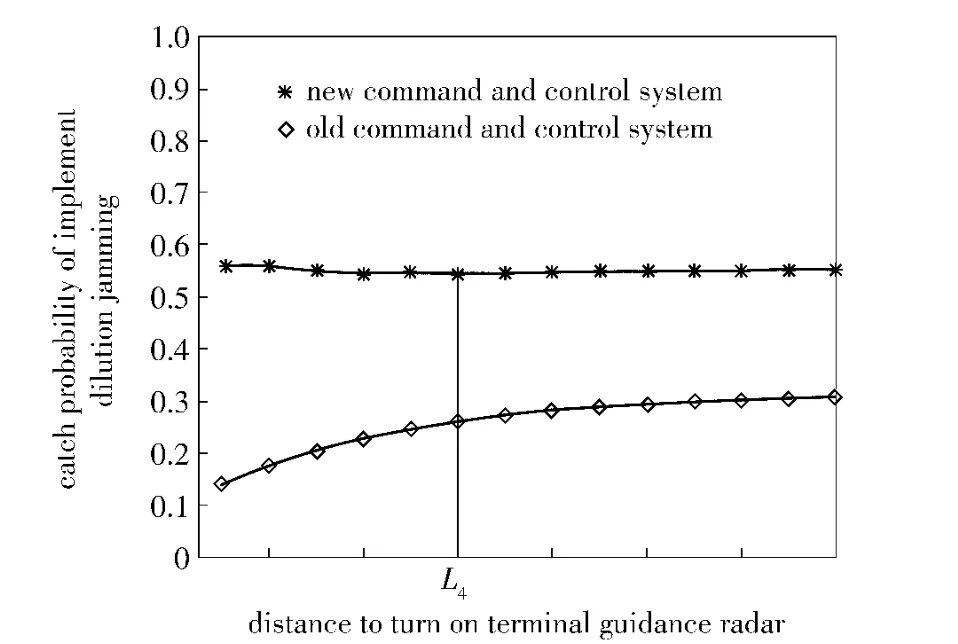
Fig.4 Catch probability in choosing target randomly
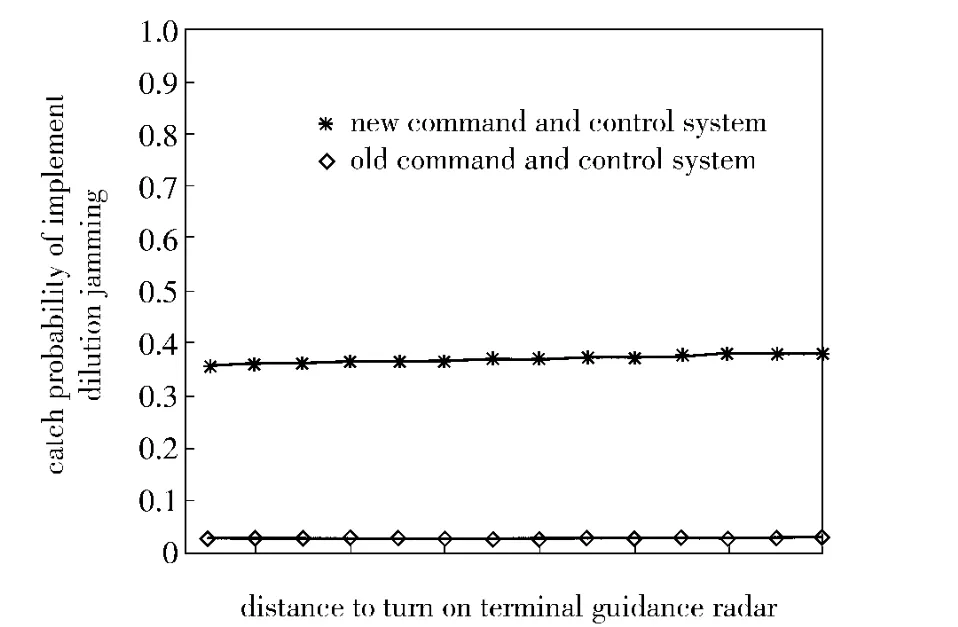
Fig.5 Catch probability in choosing target nearest away from center
4 Conclusions
From above analyses,it can be seen that,currently,the tactics analysis and weapons development are separated each other in practice,but they must be combined organically in theory.To resolve this contradiction,the method of integrated analysis of equipment and tactics(IAET)is proposed in this paper.Its framework,engineering technique and application demonstrations are discussed to expound how to solve the contradiction.
[1]SHA Ji-chang,MAO Chi-long,CHEN Chao.War design engineering[M].Beijing:Science Press,2009:174 -206.(in Chinese)
[2]Liu Z,Yang D S,Wen D,et al.Cyber-Physical-Social systems for command and control[J].IEEE Intelligent System,2011,26(4):92-93.
[3]David F.Matthews.The new joint capabilities integration development system(JCIDS)and its potential impacts upon defense program managers[R].California:Graduate School of Business& Public Policy,2004,9:6-12.
[4]Darilek R,Pirnie B,Drezner S,et al.Issues and insights from the army technology seminar game[R].Santa Monica:Rand Arroyo Center Santa Monica CA,1997:22-25.
[5]Randy J,Dean.Warfare analysis laboratory 2000[J].Johns Horkings APL Technical Digest,2000,21(2):231-237.
[6]Kelen G D,Kraus C K,MeCarthy M L,et al.Inpatient disposition classification for the creation of hospital surge capacity:a multiphase study[J].The Lancet,2006,368(9551):1984-1990.
[7]CHANG Xian-qi,LI Yuan-zuo,LIU Shu-yun.Study on content system of HWMSESMS[J].Systems Engineeringtheory& Practice,2001,20(6):86-90.(in Chinese)
[8]WANG Bing,CHANG Xian-qi,LI Yuan-zuo.Concept exploration of hall for workshop of meta-synthesis engineering for space military system[J].Journal of the Academy of Equipment Command & Technology,2003,14(1):46-49.(in Chinese)
[9]JIN Xin,LI Yuan-zuo,MA Hong-guang.Meta-synthesis of problem solving for space military complex decision system[J].Complex Systems and Complexity Science,2005,2(2):87-92.(in Chinese)
[10]JIN Xin,BI Yi-ming.A model of experts minds integration in the hall for workshop for space military system[J].Command Control and Simulation,2009,31(2):9-12.(in Chinese)
[11]Dobbins J,Gompert D C.Conflict with China:prospects,comsequence and strategies for deterrence[R].Santa Monica:Rand Arroyo Center Santa Monica CA,2011:55-59.
[12]Andrew P.Formulation of anintegrated robust design and tactics optimization process for undersea weapon systems[D].Georgia:School of Aerospace Engineering,Georgia Institute of Technology,2004:33-45.
- Defence Technology的其它文章
- Research on Coordinated Antisumarine Attack Effeciency of Two Helicopters Under Countermeasures
- Experimental Study on Plasma Temperature of Semiconductor Bridge
- Design of ANSYS-based Cathode with Complex Groove
- Study on Stable Scanning of Terminal Sensing Ammunition Based on Quaternion Transformation
- Experimental Investigation on Space-dispersed Double-wall Jet Combustion System for DI Diesel Engine
- Research on Three-Echelon Inventory Model and Algorithm for Valuable Spare Parts in Weapon Equipment

